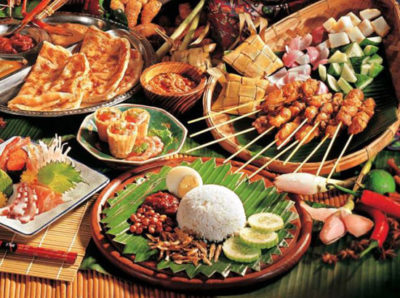
Would you like to learn how to prepare the most popular Singaporean hawker dishes, such as satay and laksa? If this is a yes, you must attend the Chef in Training (Singaporean Cuisine) Foundations in Singapore.
Now, you will be able to experience authentic Singaporean flavours at home through the 6-day Chef in Training program.
Hands-on Chef in Training (Singaporean Cuisine) Foundations in Singapore
Total sessions: 6
Duration: 4 hours per session
Class Highlights: The 6-day hands-on course introduces participants to the best hawker heritage flavours available in Singapore.
Class Information: The intensive cooking classes teach you how to make delicious dishes incorporating the diverse cultures of Singapore. Those who want to expand their kitchen skills, whether they are home gourmands, domestic helpers, or professionals, should take this course.
Let’s see the Singapore cuisine you will learn in our classes!
Day 1: Oyster Omelette, Wonton Noodles, and Bak Chor Mee
Oyster Omelette
The omelette is a mixture of egg and flour. You will learn how to fry it with a generous amount of fresh oysters and garnish it with bean sprouts and coriander leaves. Lastly, you can eat the oyster omelette with a sweet and spicy sauce to further enhance the flavour. The oyster omelette can either be crispy or soft, depending on personal preference.
Wonton Noodles
The broth of wonton noodles is as rich in flavour as its history. The dish is popular not only in Singapore, but also in China, Thailand, Malaysia, and Hong Kong. This dish consists of wonton noodles, dumplings, and leafy greens.
Bak Chor Mee
Bak Chor Mee is another popular hawker food. The dish comprises vinegar-tossed noodles with mushrooms, liver, pork slices, minced meat, and deep-fried lard. Depending on the preference, it can either be dry or soup. It is one of the most delicious and must-try dishes in Singapore.
Day 2: Mee Goreng, Mee Siam, and Chicken Satay
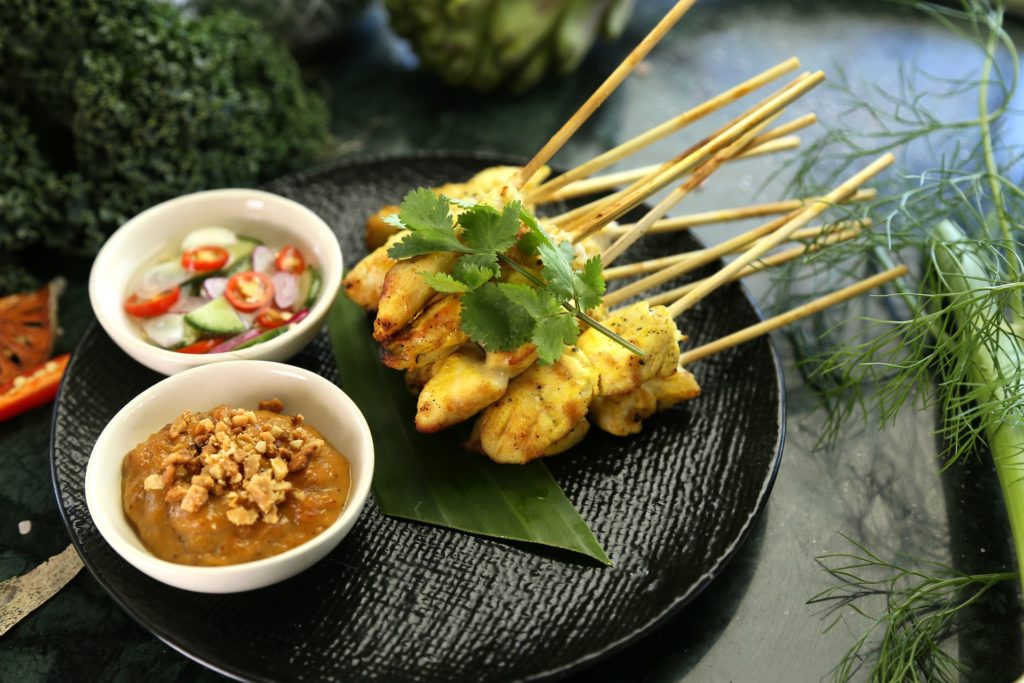
Mee Goreng
Mee Goreng is a fried noodle dish. It is an early example of fusion cuisine, combining diverse ingredients including tasty yellow egg noodles from Chinese cuisine with mutton and spices from Indian cuisine and tomato sauce from Western cuisine.
First, fry this spicy egg noodle mix with mutton or chicken meat, beansprouts, cabbage, onions, peas, and potatoes. Next, add fried, scrambled, or boiled eggs, Tau Kua, and thinly sliced green chillies to the noodle. You can stir-fry the noodles with either chilli or ketchup.
Mee Siam
Mee siam is the rice vermicelli or bee hoon dish with a distinctive tart and sweet sauce. The gravy is reminiscent of Thai flavours and it is a mixture of soybean paste, shrimp paste, sugar, shrimp, and tamarind. Then, serve the gravy with the beef hoon. Finally, garnish the dish with Chinese chives, bean sprouts, bean curd, and slices of hard-boiled egg.
Chicken Satay
Satay is a type of kebab developed by Javanese street vendors and adapted from Indian kebabs. This dish consists of skewered chicken that can been seasoned, grilled, and served with sauce. Satay is usually served with peanut sauce – the meat is skewered and grilled over wood fire or charcoal.
Day 3: Fried Carrot Cake, Fried Hokkien Mee, Chwee Kueh
Fried Carrot Cake
The Chai Tow Kway dish consists of radish cake cubes that are stir-fried in garlic, preserved radish, and eggs with preserved radish. There are two versions: white and black. In the white version, light soy sauce is used while in the black version, dark soy sauce is used. There are no carrots used in this recipe, but the term “chai tow” means “carrot” or “radish.”.
Fried Hokkien Mee
This popular Southeast Asian dish has its origins in Chinese cuisine’s Hokkien (Fujian) province with different variants. The Singaporean version consists of rice noodles and egg noodles stir-fried with prawns, egg, pork slices, and squid. It is served with sambal sauce, lime, lard pieces, and vegetables. Hokkien Mee is usually served with squid, pork ribs, fish cakes, prawns, chives, or spring onions.
Chwee Kueh
The term “Chwee Kueh” refers to a steamed rice cake with preserved radish toppings. Water and rice flour are mixed until slightly viscous. Then, the mixture is poured into small saucer-like cups. This is followed by steaming to create a bowl-shaped form. To enhance the taste of the rice cakes, preserved radish dice are added to the top and chilli sauce is served on the side.
Day 4: Char Kway Teow, Chicken Rice, and Jelly Dessert
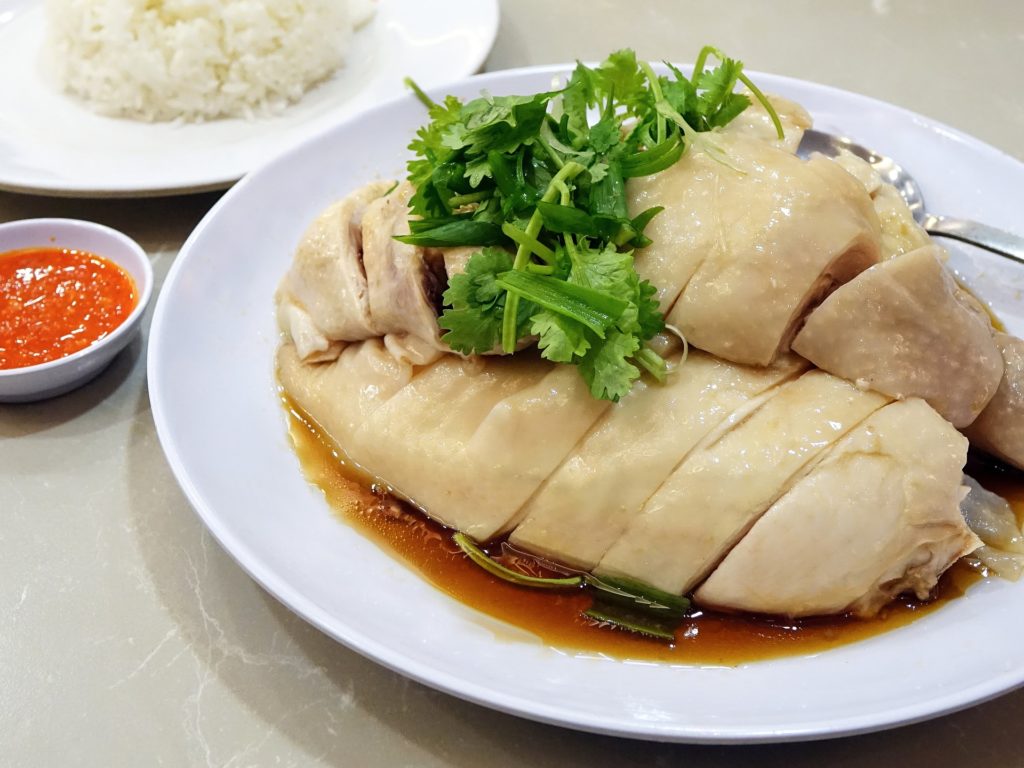
Char Kway Teow
In Asian cuisine, Char Kway Teow is a stir-fried noodles dish. In this dish, flat rice noodles are stir-fried with pork fat, chillies, light and dark soy sauce, bean sprouts, blood cockles, shrimp paste, fish cake, and Chinese sausage. Often, it is served in a banana leaf to enhance its aroma. To further enhance its flavor, a lime wedge is squeezed over it.
Chicken Rice
In Singapore, chicken rice is regarded as one of the national dishes due to its delicious taste and simplicity. The dish consists of seasoned rice and poached chicken with a chilli sauce and sliced cucumber. During the cooking process, the whole chicken is poached at a sub-boiling temperature, while ginger, garlic, and chicken stock are used to enhance the flavour of the rice. Thus, the oily yet flavorful rice.
Jelly Dessert
The jelly dessert is one of Singapore’s most popular desserts. This dessert is prepared using collagen products that have been sweetened and flavoured. Adding jelly dessert to a teatime treat enhances its appeal. Adding a bit of milk or coconut milk before serving enhances the flavors. It is best to serve it chilled.
Day 5: Fresh Lime Juice, Hainanese Pork Chop Rice, and Singapore Laksa
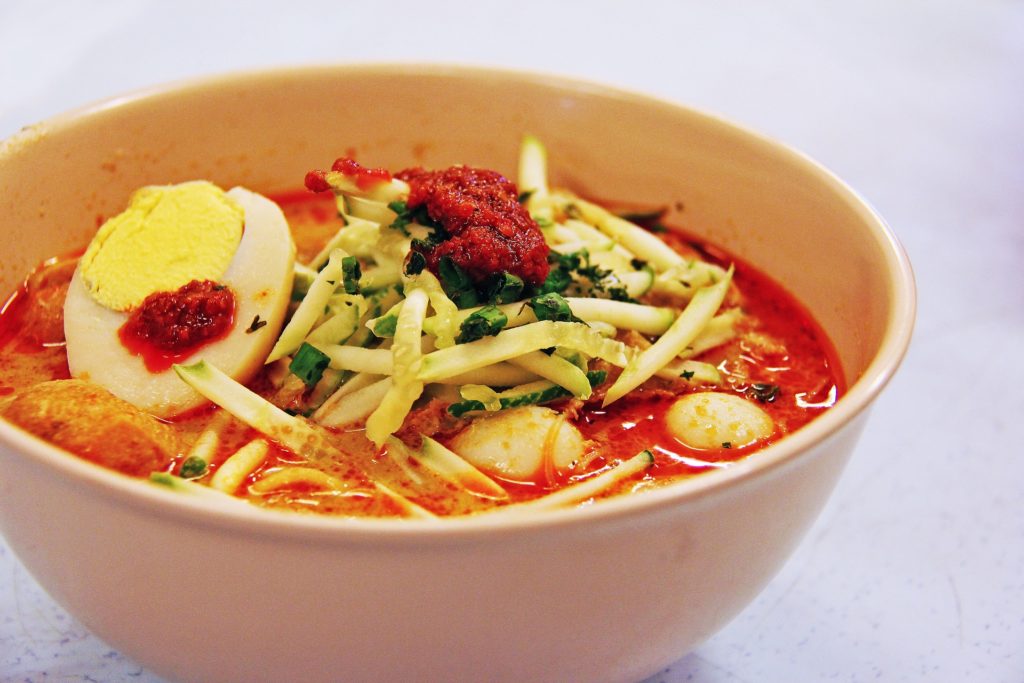
Fresh Lime Juice
You will learn how to make lime juice at home in this class. It is an ideal juice recipe for summer days or any time of the year.
Hainanese Pork Chop Rice
Hainanese, who lived in Singapore and often worked as chefs for British and wealthy Straits Chinese, developed this dish. Porkchop is the centrepiece of the dish, which was adapted from British cuisine. Additionally, there are ingredients such as babi pongteh, curry chicken, and chap chye.
Singapore Laksa
Laksa is a spicy Peranakan noodle soup made from rice vermicelli or thick wheat noodles with fish, prawns, or chicken. There is a perfect balance of coconut milk and spice in the broth. Some soup bases are sour (gelugur or tamarind), resulting in a unique taste. Noodles are cut into shorter pieces in order to make the Laksa easier to consume with a spoon.
Day 6: Bandung Drink, Mixed Rojak, and Nasi Lemak
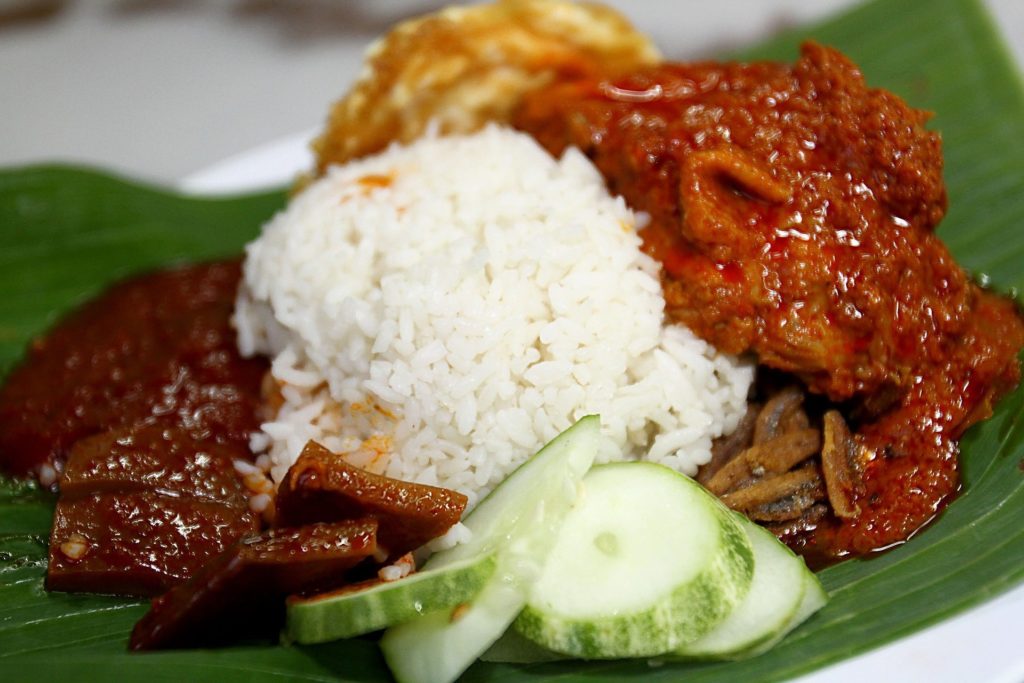
Bandung Drink
In Malaysia, Singapore, and Brunei, Bandung drink is very popular. For a unique flavour and pink colour, the drink contains milk and rose cordial. It is often served at weddings and Iftar during the month of Ramadan, together with other foods such as rendang and biryani. It is also common to add soda water or grass jelly to the street food.
Mixed Fruit Rojak
Rojak consists primarily of fresh fruits and vegetables. The ingredients in this dish include green apples, mangoes, pineapples, and cucumbers. Then, they are mixed with a thick brown sauce made with crushed peanuts, chilli, sugar, tamarind, and shrimp paste. This food is served with roasted beancurd, deep-fried dough fritters, ground peanuts, and ginger flowers.
Nasi Lemak
As the name implies, Nasi consists of fragrant rice cooked in a pandan leaf and coconut leaf. Breakfast is a popular Singaporean food, which you can enjoy throughout the day. There are various accompaniments to this dish, including fresh cucumber, roasted peanuts, small fried anchovies, and fried or hard-boiled eggs. As a lunch or dinner dish, you can always add some proteins, including small fried fish, chilli cuttlefish, and fried chicken.
Conclusion
Singaporean cuisine is famous for its diversity, blending Indian, Chinese, Malay, Indonesian, and Western influences. In Singapore, you can visit one of the food courts or hawker centres, this visit will give you gastronomic satisfaction unlike any other.
Please send us an enquiry form to receive updates on class schedules.

20 Responses
Hi,
I am interested to join this class. May I know the schedule? Do you have any Saturday classes?
Can we use the Skills future credits?
Hi Shuhui,
We have replied to you via email.
Thank you and have a nice day.
Very best,
Kristi Sheldon
Customer Happiness Manager
Cooking Class Singapore
Hi,
I am interested to join this class. May I know the schedule too?
Hi Q Tam,
We have replied to you via email.
Thank you and have a nice day.
Very best,
Kristi Sheldon
Customer Happiness Manager
Cooking Class Singapore
hi there
What is the fees and schedule for 2023 for Spore Cuisine?
Thanks
Hi Alec,
We have replied to you via email.
Thank you and have a nice day.
Very best,
Kristi Sheldon
Customer Happiness Manager
Please send me the schedule for this course in the June-July 2023 period, if available. Thanks!
Hi Sherry,
We have replied to you via email.
Thank you and have a nice day.
Very best,
Kristi Sheldon
Customer Happiness Manager
Please send me more details, schedule and fees for classes JUNE/JULY 2023
Hi Shailaja Shetty,
We have replied to you via email.
Thank you and have a nice day.
Very best,
Kristi Sheldon
Customer Happiness Manager
Hi I am interested to join in the classes, can you send me more details on this? Thanks
Hi Zhen Yu,
We have replied to you via email.
Thank you and have a nice day.
Very best,
Kristi Sheldon
Hi is the course available using skillsfuture credits? Any courses in 2nd half of Feb 2024?
Hi Sally,
We have replied to you via email.
Thank you and have a nice day.
Very best,
Kristi Sheldon
Hi, can I have the schedule and fee, please. Thanks.
Hi Vka,
We have replied to you via email.
Thank you and have a nice day.
Very best,
Kristi Sheldon
Hi,
I’m interested to join in the classes.
Can you send me the schedule and fee?
Thank you
Hi RK,
We have replied to you via email.
Thank you and have a nice day.
Very best,
Kristi Sheldon
Hi. Please let me know the schedule and fee? Thank you.
Hi Daisuke,
We have replied to you via email.
Thank you and have a nice day.
Very best,
Kristi Sheldon